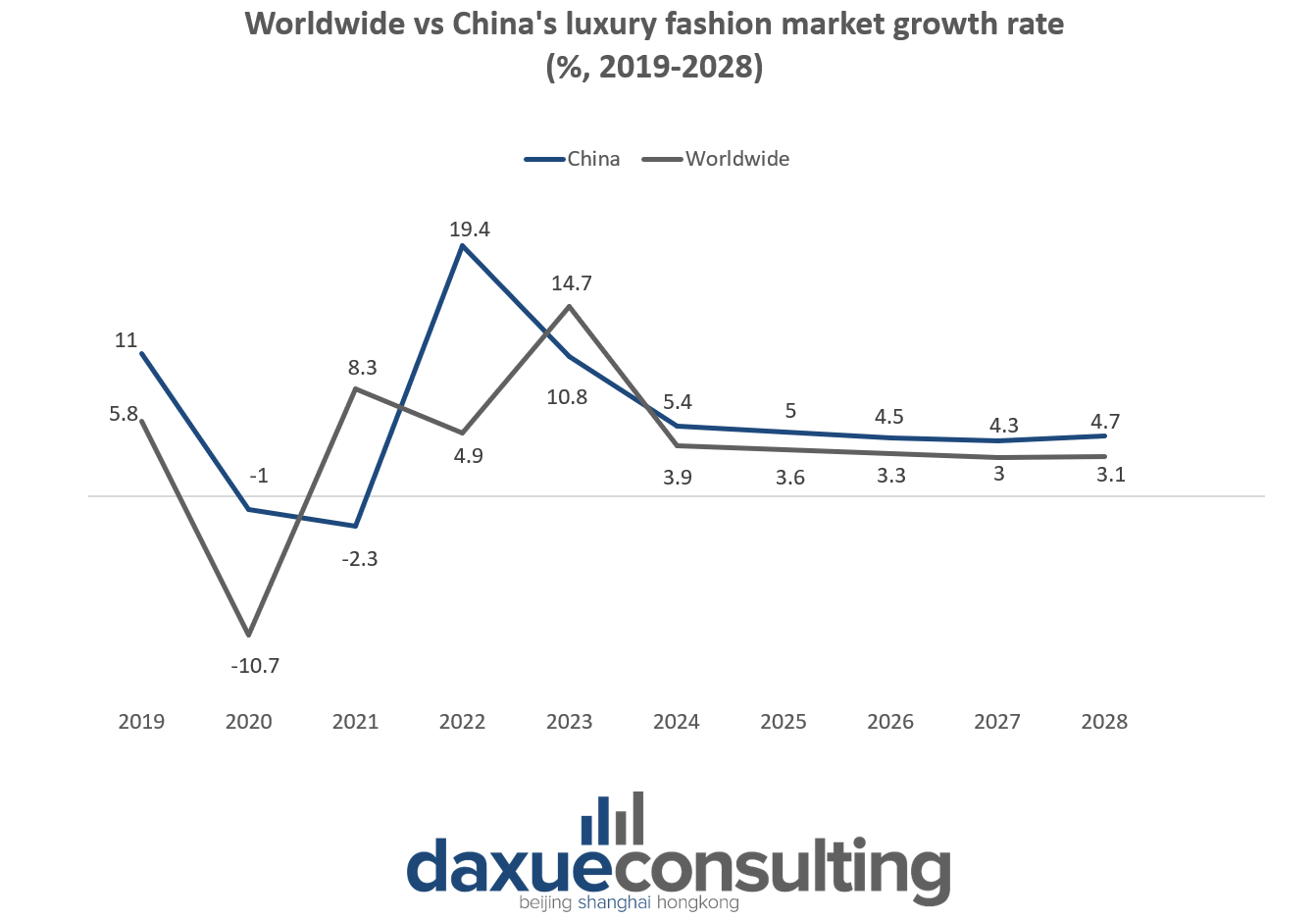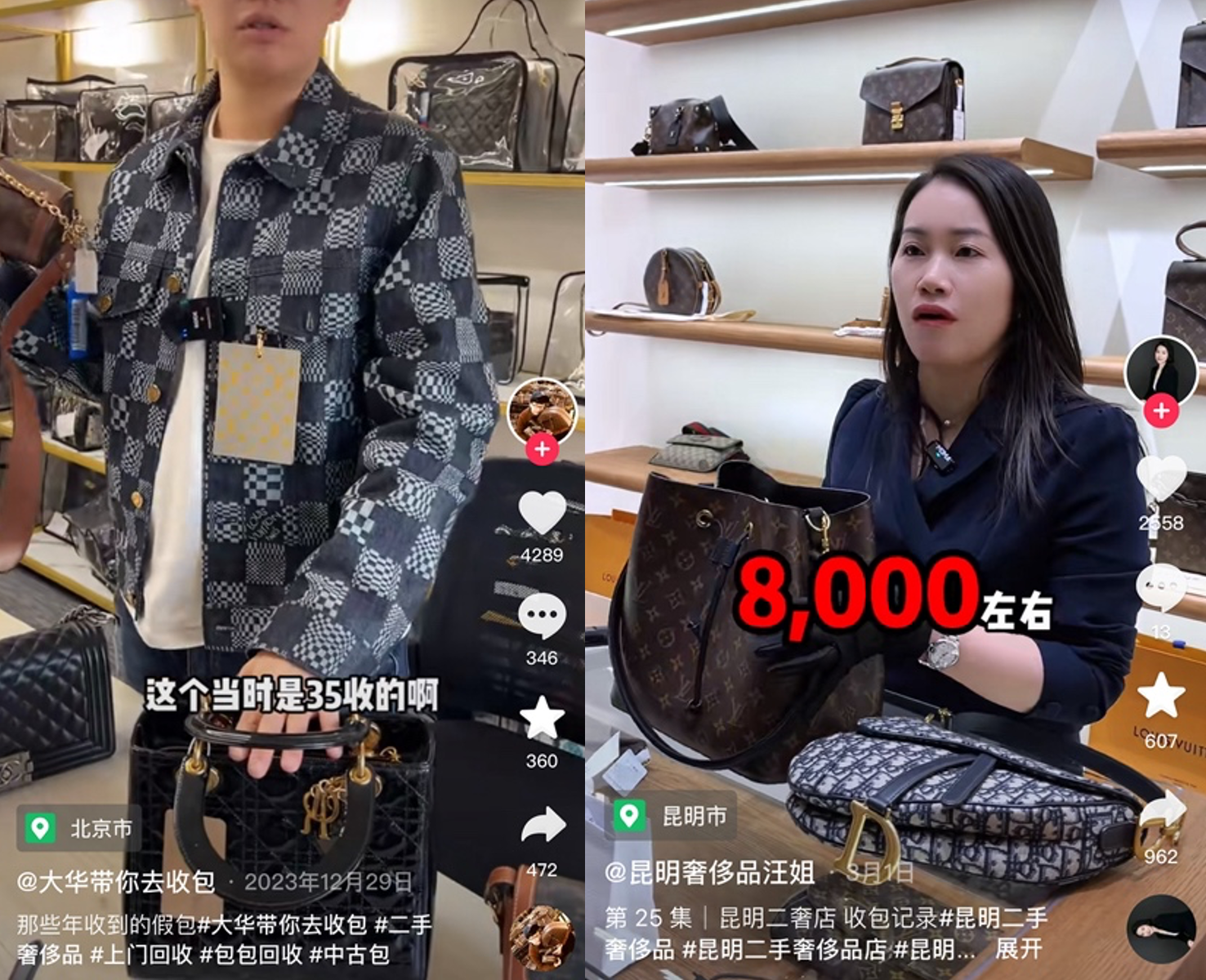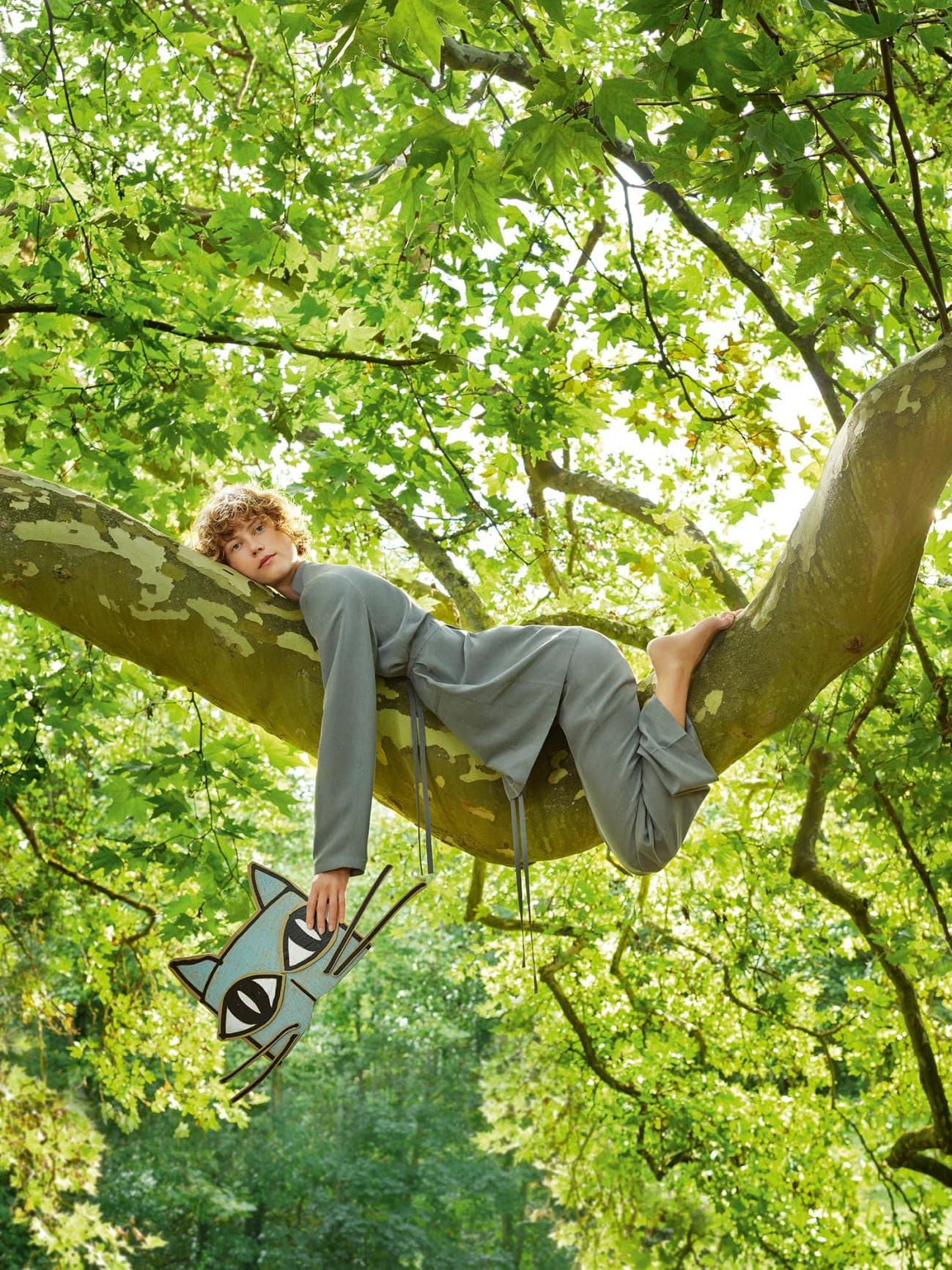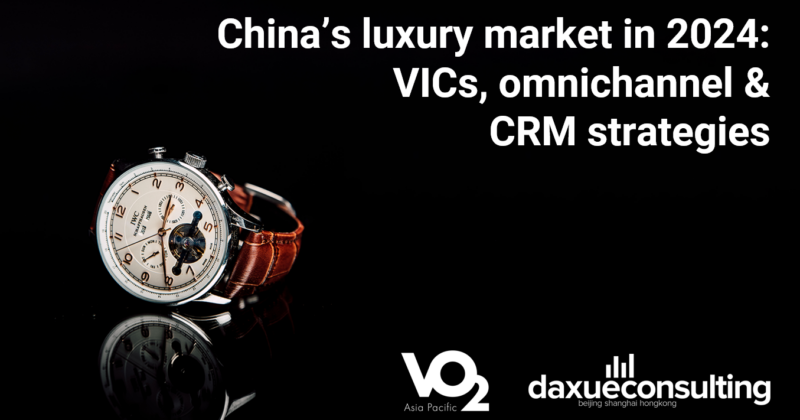China’s fashion industry is currently experiencing an era of unprecedented change and growth. In the “State of Fashion 2023” report, a joint effort by BoF and McKinsey, it was projected that the global fashion market will slow down in 2023 due to macroeconomic and geopolitical factors, including rising inflation, supply chain pressures, and political tensions. While the United States held the title for the most lucrative market for the fashion industry in 2022, China was not far behind, with an economic recovery that outpaced the rest of the world and remarkable growth in both high-end and low-end markets. Furthermore, the fashion industry in China is estimated to be the largest contributor to the overall market revenue in 2024 and continues to exhibit growth.
The rise of China’s brand consumers
Because of the improving living conditions and rising incomes of the middle class in China, Chinese consumers have become highly brand-conscious. They are more discerning in their purchasing habits and tend to seek out products that offer a sense of quality and prestige. China’s fashion market is expected to generate a revenue of US$360.4 billion by 2029.
Moreover, Chinese consumers have strong purchasing power for luxury goods in the global market. This is evident from the fact that the luxury market in China draws a significant number of Very Important Customers (VICs), who are willing to pay a premium for luxury products. The trend of attracting VICs has further increased in 2023, indicating the strong demand for luxury goods among Chinese consumers. Apart from luxury goods, fast fashion companies such as Zara and Uniqlo have maintained a good momentum and are still popular among young Chinese consumers.
China’s luxury fashion segment has emerged as a significant player within the country’s fashion industry. Despite a recent dip in the luxury market, with a 10% year-on-year decline in 2022, the first quarter of 2023 has showcased a resurgence, suggesting that China is reclaiming its role as a key growth driver for the luxury goods industry.
With the Chinese economy growing rapidly and the tourism industry thriving globally, the luxury market is poised for continued growth. Wealthy Chinese consumers are better protected from hyperinflation, making the luxury market more attractive to them. As they continue to travel and spend, the luxury market is expected to keep growing.

Younger Chinese consumers are driving the growth of the second-hand apparel market
The second-hand clothing market in China is also growing and making waves. According to the 2021 China Second-hand Luxury Industry Overview, China’s second-hand luxury market jumped from roughly 5.9 billion RMB (850 million USD) to 17.3 billion RMB (2.5 billion USD) between 2016 and 2020.

The high and medium-income groups account for a large portion of secondhand clothing buyers. This can be attributed to their attitude towards sustainable fashion and exposure to media influence. In addition, second-hand consumption has gained increasing popularity among young people, fueled by promotion by celebrities and key opinion leaders (KOLs), making it a rising trend in China. As more people become conscious of the environmental and economic benefits of buying pre-owned items, this trend is expected to continue.

Source: Xiaohongshu, second-hand luxury bag sales on Xiaohongshu
The developing e-retail markets in the fashion industry in China
Chinese e-commerce is dominated by a few domestic giants, including Alibaba, Tencent, and Baidu. Fashion is one of China’s biggest e-commerce categories, with most apparel purchases made on Taobao. The availability of diverse designs and lower prices online has made Taobao the preferred choice for many Chinese consumers. This shift in consumer behavior has also given rise to the emergence of social media influencers who have a significant impact on fashion trends and online shopping, particularly among young people. As a result, many of them create their brands and sell clothes on Taobao. As the e-retail markets continue developing, the fashion industry in China is poised for even more promising growth.
Capturing e-commerce opportunities in China’s low-tier cities
China’s e-commerce industry has witnessed rapid development, establishing itself as a vital retail channel over the years. The clothing category stands out as distinct from other product categories, offering a higher level of personalization. China’s B2C clothing e-commerce market was estimated to have a transaction scale of around US$310.48 billion in 2021. This highlights Chinese consumers’ immense potential and demand for online clothing shopping experiences.
While e-commerce consumption rates in first-tier cities such as Shanghai and Beijing are significantly higher than in low-tier cities, there remains considerable opportunity for businesses to strategically expand into these less-developed areas. As the degree of digitalization in lower-tier cities rises, there is a growing potential to enhance consumption patterns.
Live-streaming becomes one of the main methods of product discovery and purchase
Fashion companies in China are increasingly using live streaming to create their online channels as the number of e-commerce platforms continues to grow. This trend is expected to further expand the Chinese fashion market throughout 2024. However, to break the near-monopoly of large e-commerce platforms like Alibaba and JD.com, Douyin implemented a policy in October 2020 that prohibits links to third-party websites from appearing on its live channels. This move aims to prevent merchants from redirecting traffic to popular e-commerce sites and keep the transactions within the Douyin platform.
Prospects of the fashion industry in China
More environmentally responsible brands
Chinese consumers are showing a growing interest in ethical practices and responsible retailing, reflecting a gradual increase in awareness of sustainability in the Chinese market. While sustainability is not yet fully mainstream, this changing landscape has paved the way for the emergence of successful sustainable fashion brands in China, like ICICLE. However, these brands face ongoing challenges in sustaining their green development amid rising costs in materials, labor, and transportation, as well as the need to comply with more active regulations and adapt to evolving consumer sentiment.

A rising trend in the fashion market: Non-Fungible Tokens (NFTs)
Over the past few years, the fashion industry has embraced the digital age, embracing new technological trends, such as NFTs, Metaverse, and Web 3.0, which have created a buzz in the fashion world. Major foreign brands like Nike, Gucci, and Burberry have explored NFTs, ushering in endless possibilities for the industry.
In China, domestic brands in the apparel industry, like Li-Ning, and the e-commerce giant Alibaba are also capitalizing on this trend, creating a virtual world for this industry. The surge of NFT-led fashion trends is sure to present both opportunities and challenges to the industry, and 2022 was a watershed moment for China’s fashion industry, signaling a new era in the development of the fashion metaverse and digital clothing manufacturing.
Millennials and Gen Z are the biggest spenders in China’s fashion market
Chinese fashion companies are facing increasing pressure to adjust their brand strategy as labor costs rise and they struggle to appeal to Millennials and Generation Z consumers. These younger generations, born between 1981-1996 and 1995-2010 respectively, prioritize individualism over conformity and are more diverse in their demands than their predecessors. They are gaining interest in traditional Chinese clothing and Chinese designers, which led to strong China representation in core fashion events, like Shanghai Fashion Week.
After three years of lockdowns, economic hardship, and isolation, China’s Gen Z population has reached 280 million, making it crucial for fashion companies to understand and cater to their changing preferences. Millennials and Gen Z consumers are more influential and tend to have more advanced consumption preferences and a better understanding of fashion trends compared to older consumers. To keep up with this market trend, fashion brands should consider continuously innovating in their product development and design, and strengthening their brand marketing and customer operations to maintain competitiveness.
Where is the Chinese fashion industry going
- China’s fashion industry is experiencing growth and change, in which middle class has become brand-conscious, with strong purchasing power for luxury goods.
- Despite a recent decline, China’s luxury fashion segment is experiencing a resurgence and remains poised for continued growth. Most major global fashion companies have established a presence in China, and the second-hand clothing market in China is expanding.
- E-commerce fashion in China is growing with the development of livestreaming shopping and social e-commerce platforms. Low price is the key factor driving e-commerce fashion in China.
- China’s fashion industry is shifting towards sustainability as consumers demand ethical practices and responsible retailing. Sustainable fashion brands’ ability to overcome rising costs and changing consumer sentiment is still uncertain.
- The industry is embracing new technological trends such as NFTs, Metaverse, and Web 3.0, creating new possibilities and challenges.
- Chinese fashion companies are targeting Millennials and Gen Z, who have progressive consumption preferences. Brands need to innovate in product development, design, and strengthen their marketing and customer operations to keep up.
Gain in-depth consumer understanding at Daxue Consulting
China’s fashion industry is an exciting and fast-changing sector. Therefore, staying ahead requires a deep understanding of market trends and consumer behavior. Daxue Consulting provides targeted market research and strategic insights that empower fashion brands to navigate this dynamic market effectively. With our expert guidance, you can make informed decisions that align with consumer preferences and industry developments.
Whether expanding your presence, introducing new lines, or optimizing current strategies, we’re here to help you achieve your business objectives. Engage with Daxue Consulting to harness the potential of China’s fashion market and propel your brand to success. Reach out to us to discuss how we can support your growth and innovation.
Download our China luxury market report







